Italy’s most famous pilgrim trail is known as the Via Francigena. This ancient route connected Canterbury in the UK through France and on to Rome and was undertaken by pilgrims more or less from the 4th century onwards. Originally this epic journey would have been attempted as an act of religious devotion. Pilgrims had many motivations for setting off: perhaps a search for eternal salvation or the hope of a miracle cure. Perhaps they believed that the voyage would in some way fulfill a vow or pay a penance for some wrongdoing. Rome’s association with the Apostles St Peter and St Paul made it a focal point, with travellers wanting to visit their tombs, and by the 4th century Rome was established as the cornerstone of Europe’s Christian church. The total distance exceeds 2,000 km and would have taken over 100 days to complete. Pilgrims would start their journey with a letter from the parish priest or bishop, attesting to their intention to complete the specific journey. The Via Francigena has its own website where you can discover much more about the history of the route and walking sections of it today. Our Parma, Tuscany and the Ligurian Sea tour touches on a section of the Via Francigena in Tuscany, as we hike from the Passo della Cisa towards Pontremoli.
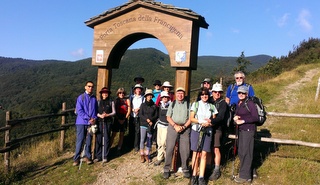
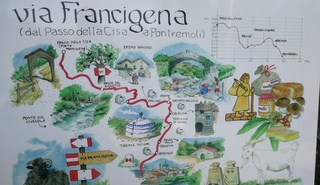
Walkers today are still attracted to Italy’s ancient pilgrim routes. Whilst nowadays there might not be the same religious motivation to embark on these hikes, there are many positive reasons to walk. The trails are peppered with historic architectural and artistic masterpieces. The Italian countryside is beautiful and bountiful in all seasons. The uncrowded paths away from tourism hot spots make for a peaceful escape from the modern world. Walkers have an opportunity to reflect on everything that is important in their lives, resolve issues or relieve stress. Well organised trails offer accommodation and refreshment stops, and local people add colour, generosity and warmth to the experience. Many hikers enjoy the challenge of following maps and finding the paths for themselves and there is no doubting a true sense of achievement at the end of the trail.
Whilst we are of course purveyors of escorted hikes, and would not want to see our guests abandon us in favour of self-guided hiking, we highlight here three additional pilgrim paths which could be considered as part of a longer stay in Italy. The routes are well signed and walkers are issued with a “pilgrim passport” which is stamped at key points along the way, reflecting the letter given to pilgrims in times gone by. It is important to plan well ahead for these types of hikes and to register and receive all the correct documentation well before departure. In the busy months of July and August accommodation is harder to secure.
La Via di San Francesco
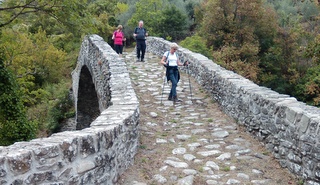
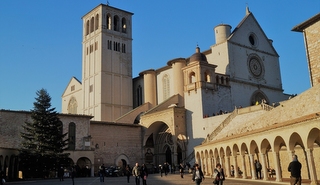
This route leads to Assisi, the birthplace and burial site of St Francis, and can be done in two different directions: from Florence down to Assisi, or from Rome up to Assisi. St Francis abandoned a life of luxury to devote himself to Christianity. He was commanded by God to rebuild the Christian church and live a life in poverty, and he is revered for his deep love of animals and the natural world. He was the founder of the Franciscan Order and is the patron saint of Italy and ecologists. The Basilica dedicated to St Francis in Assisi is one of Italy’s greatest monuments.
The route which bears his name is divided into different stages with an average distance of 25 km per stage. There is plenty of advice given on where to make stops, fill water bottles and tips on the terrain. Our Medieval Umbria tour touches on this pilgrim path, as we explore Sansepolcro and Gubbio. Walkers are advised to book well in advance and request the Pilgrim’s Credential document two months ahead if arriving from outside Italy. The walk has its own website which you can see here.
Il Cammino di San Benedetto
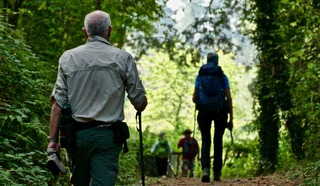
This 300 km walk through the heart of Italy follows in the footsteps of St Benedict. It starts from Norcia, his birthplace in Umbria, and runs through the whole of Lazio to include Subiaco, his home for more than thirty years. The trail ends at Montecassino, where he spent the last years of his life and founded the magnificent Abbey, a site which remains one of the most stunning and historically important in all of Italy. St Benedict was the founder of the Benedictine Order and he is considered the father of Western monasticism. His writings, known as the “Rule”, became the blueprint for monastic living throughout Europe.
The route is divided into 16 stages and there is a printed guide which is translated into English. There is another dedicated website which is full of useful information.
Il Cammino di Dante
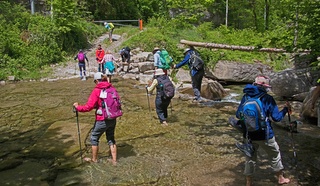
This circular route, of about 235 miles in 20 stages, connects Florence to Ravenna and follows in the footsteps of one of Italy’s greatest writers, Dante Alighieri. He was a thirteenth century poet, prose writer, moral philosopher and political thinker and is best known for the monumental poem The Divine Comedy. Many of the descriptions in this epic work are said to have been inspired by this landscape between Tuscany and Emilia Romagna, and there are points along the walk which are key to his life and writings.
Our Northern Tuscany and Ravenna hike touches on this landscape too, as we hike close to Brisighella and the Valle d’Inferno in the region of the Mugello. There is a website for this walk in Italian which can be translated through your browser and there is a printed guide and pilgrim passport which is issued upon registration.
Whatever your inspiration for walking a pilgrim path, it can be an immensely meaningful undertaking, and an experience which will never be forgotten. We leave you with an interesting quote from John Muir, the famous Scots-born founder of the modern conservation movement. “I don’t like either the word [hike] or the thing. People ought to saunter in the mountains – not ‘hike!’ Do you know the origin of that word saunter? It’s a beautiful word. Away back in the middle ages people used to go on pilgrimages to the Holy Land, and when people in the villages through which they passed asked where they were going they would reply, ‘A la sainte terre’, ‘To the Holy Land.’ And so they became known as sainte-terre-ers or saunterers. Now these mountains are our Holy Land, and we ought to saunter through them reverently, not ‘hike’ through them.”
